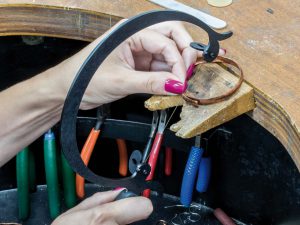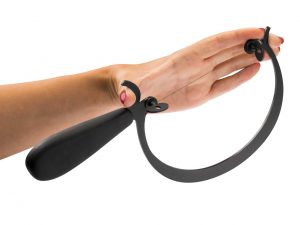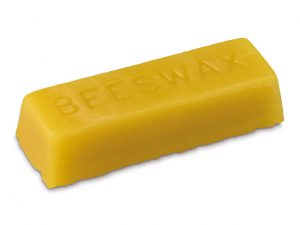 Starting out in jewellery making? Need to brush up on your pre-existing knowledge? Either way, you’ll need to know how to use a jeweller’s saw. And this can be pretty tricky if you’re learning it for the first time. So to help you on your way, we’ve listed everything you need to know for using a jeweller’s saw – from attaching the right blades, to the correct way to use them. Find out more below.
Starting out in jewellery making? Need to brush up on your pre-existing knowledge? Either way, you’ll need to know how to use a jeweller’s saw. And this can be pretty tricky if you’re learning it for the first time. So to help you on your way, we’ve listed everything you need to know for using a jeweller’s saw – from attaching the right blades, to the correct way to use them. Find out more below.
What size jeweller’s saw blade to use
First things first, you need to use the correct size blade. Depending on the thickness of the metal you’re using, your saw blade will need to match. For thinner metals, use a blade with more teeth and vice versa. If you’d like more detail on what size jeweller’s saw blade to use, check out our Jeweller’s Saw Blades Sizing Chart.
How to put a blade in a jeweller’s saw
Now you’ve sorted the right sized blade, next up is attaching it to the saw frame.
- First up, you’ll need to establish the direction of the teeth – they need to face downwards when in the frame.
- Next, loosen the thumb screw on the top of the frame and insert the blade in between the plates with the teeth facing outwards.
- Once you’ve re-tightened the thumb screw, do the same with the bottom so that the blade is in place.
- The last step to ensure the blade is fitted properly is the sound test. Pluck the blade as you would a guitar string. If you hear a ‘twang’ – it’s not tight enough. If you hear a ‘ping’, you’re ready to start sawing.


How to use a jeweller’s saw to avoid breaking blades
You’ve attached your blade and you’re ready to start sawing, but there are still a few key tips to consider. Here’s how to use a jeweller’s saw to avoid breaking blades:
- Avoid twisting the blade. This sounds fairly obvious, but it can happen without you noticing. If you’re sawing a design that has a lot of curves, make sure the blade isn’t twisting to the side as it can snap pretty easily.
- Be careful with corners. If you’re sawing something with sharp corners, all is not lost. You can saw the corners without breaking a blade every time. All you have to do is stop when you reach the corner, continue the sawing motion without adding pressure and then gradually turn the blade.
- Stabilise the metal with your hand. This will help to keep your metal in place so you don’t make any sudden or sharp movements with your saw.
- Use beeswax. Another way you can prevent saw blades from breaking is by coating them in beeswax – that way the blades won’t stick to your designs.


- Keep checking the tension. Using the sound test mentioned previously, it’s important to keep checking that your blade is taut enough.
- Don’t add too much pressure to the blade. Instead, hold the frame lightly and use longer, even strokes.
- Start sawing with an indentation. Do this by just sawing upwards a few times when you begin. This will guide you in the right direction for a more accurate result.
Feeling ready to give it a go? If you feel unsure while you’re trying it, just re-read our blog on how to use a jeweller’s saw. Or check out our Tips and Tools For Cutting Sheet Metal and make sure you have all the jewellery tools and supplies you need for your projects today.


Cooksongold
